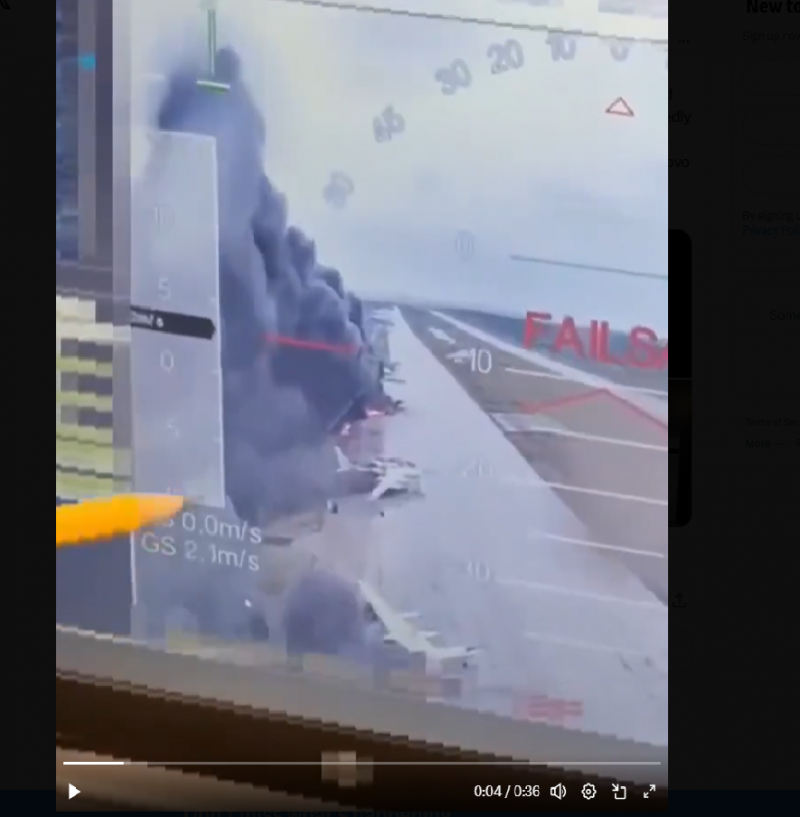Trojan Horse of Modern Warfare

By Rohit Srivastava
On June 1, Russia witnessed the destruction of its strategic air assets by Ukrainian First-Person Drones (FPV) launched from truck from the close vicinity of its strategic airbases.
"Today, the Kiev regime staged a terror attack with the use of FPV drones on airfields in the Murmansk, Irkutsk, Ivanovo, Ryazan, and Amur Regions. All terror attacks on military airfields in the Ivanovo, Ryazan, and Amur Regions were repelled," it said. "No casualties were reported either among servicemen or civilians. Some of those involved in the terror attacks were detained," Russian Ministry of Defence said in a statement.
"As a result of the launch of FPV drones from territories in the exact proximity to military airfields in the Murmansk and Irkutsk Regions, several aircraft caught fire. The fires were extinguished," the statement said.
The significance of the attack lies in the ability to reach to Belaya air base, Irkutsk in the Southern Siberia, close to Mongolia border, at least 5000 km from Ukraine border and damage Tu-95 strategic bombers capable of launching long-range strike using long-range air-to-ground cruise missiles like Kh-55(Nuclear), Kh-101 etc.
Russia has accepted damage of 4 aircraft, where as Ukraine has claimed to damage 40 aircraft across all bases. Ukraine’s ability to reach Ukrainka airbase, Amur - one the eastern most region of Russia, has showcased that drones can nullify strategic depth.
This is not the first time when Ukrainian drones have attacked Russian air fields and strategic infrastructure deep inside Russian territory. In 2023 Soltsy airfield in Novgorod region, around 200 km from St. Petersburg was attacked by drones. In November 2024, air defence of Moscow was penetrated by Ukrainian drones.
Significance
To simultaneously attack multiple bases, thousands of kilometers away from each other across Russia, requires meticulous planning, developing intelligence assets, TECHINT, COMINT, HUMINT, satellite data and sat-com link for launch. This would not have been possible without western intelligence support.
Executing operation of this complexity would require long-term planning and specially designated team. The amount of data crunching required for this operation can only be done through bringing together assets of NATO countries.
This operation has shown the world that targeting the weakest point of strongest asset has maximum tactical and strategic rewards. Russian long-range strategic bombers (Tu-95 and Tu-160) are the crown jewel of its military aviation and has kept the US Navy at bay in the Northern Pacific. Armed with both nuclear and conventional cruise missiles, these strategic bombers are capable of hitting over 2000 kms land assets and naval fleets with equal ease. They are the original carrier killers.
Given their strategic role, especially in Pacific region, they are securely stationed in far eastern bases, away from reach of any adversary. This is the reason why they were not inside the hanger.
Any effort to target these faraway bases using missiles would be futile as the Russian electronic warfare and layered air defence would neutralize them.
Why FPV?
In conventional wars, where air assets cannot reach, special forces or agents are employed to sabotage air bases. Special forces are trained for this role. Now, that role has been executed by swarm of FPVs.
Drone are emerging as infantry of air. They perform all tasks of infantry with accuracy, precision and with element of surprise. They cost significantly lesser than a soldier.
Given the strategic depth of Russia, which is its biggest strength and has played significant role in its victory against Napolean, Hitler and even in this ongoing conflict. Majority of Russia is unaffected by any conflict in Western borders. This allows Russia to keep its economy running while western front is embroiled in war.
This sense of security can make any military relaxed. If Russian EW were not active in these bases, then one can’t blame the commanders. There was no apparent threat. Base commanders would ensure no such event is repeated.
The size of Russian air space comes with own set of challenges. It is impossible to have an unbroken radar or EW coverage on Russian borders. This was the case with US before 9/11. The heinous attack on Twin Towers forced US to enhance security of its air space.
The real breach of Russian security is in the transportation of FPVs in Trucks to location and satellite communication required to launch the swarm. How to ensure same cannot be repeated is the real challenge. And also, for all the nations dealing with armed conflicts across the world.




